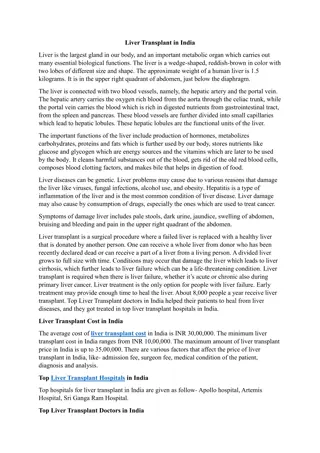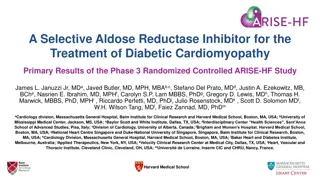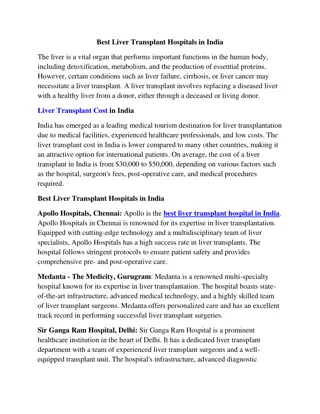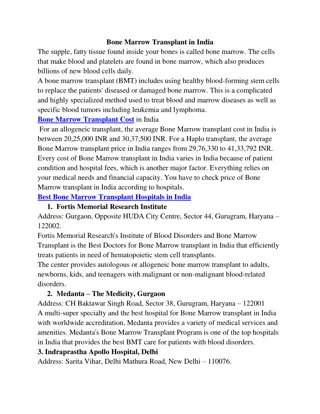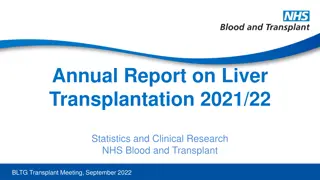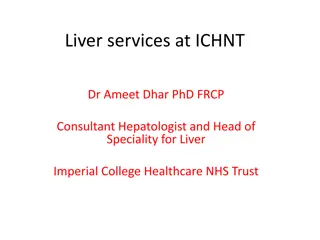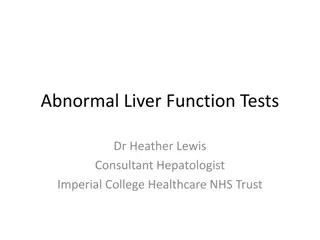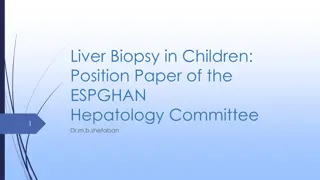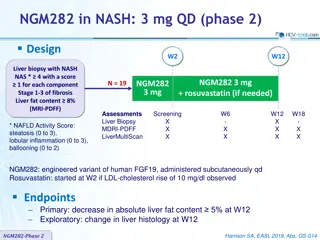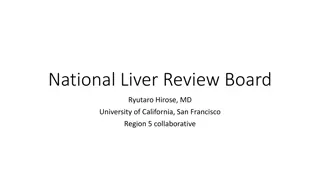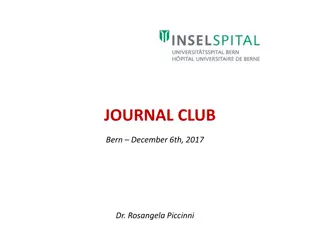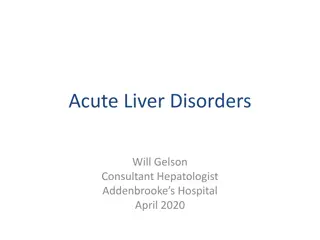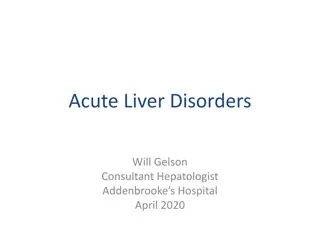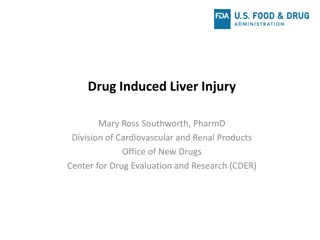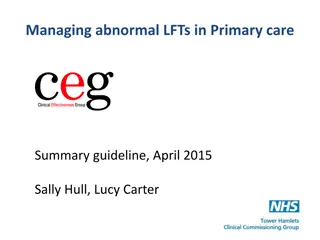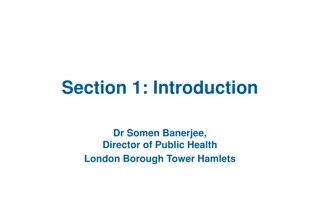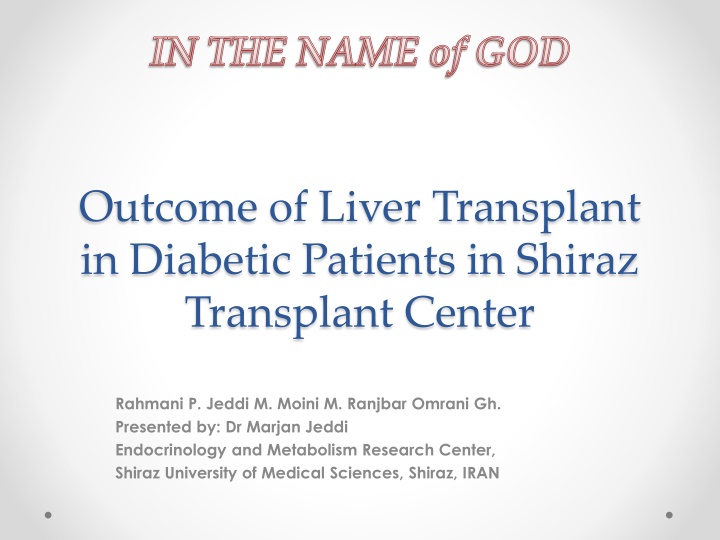
Outcome of Liver Transplant in Diabetic Patients at Shiraz Transplant Center
Liver transplantation is a crucial therapeutic intervention for liver failure, but diabetic patients face increased risks post-transplantation. This study evaluates post-transplant complications in diabetic and non-diabetic patients at Shiraz Transplant Center.
Download Presentation

Please find below an Image/Link to download the presentation.
The content on the website is provided AS IS for your information and personal use only. It may not be sold, licensed, or shared on other websites without obtaining consent from the author. If you encounter any issues during the download, it is possible that the publisher has removed the file from their server.
You are allowed to download the files provided on this website for personal or commercial use, subject to the condition that they are used lawfully. All files are the property of their respective owners.
The content on the website is provided AS IS for your information and personal use only. It may not be sold, licensed, or shared on other websites without obtaining consent from the author.
E N D
Presentation Transcript
IN THE NAME of GOD Outcome of Liver Transplant in Diabetic Patients in Shiraz Transplant Center Rahmani P. Jeddi M. Moini M. Ranjbar Omrani Gh. Presented by: Dr Marjan Jeddi Endocrinology and Metabolism Research Center, Shiraz University of Medical Sciences, Shiraz, IRAN
INTRODUCTION Liver transplantation is widely accepted as an effective therapeutic modality for acute and chronic liver failure Complications are common in the early and long term period and contribute to significant morbidity and mortality
PLTDM One of the most frequent complications after liver transplantation is the development new onset DM after transplant (NODAT) In addition to all the well-known complications of DM, NODAT is associated with reduced graft function, increased risk of transplant loss, increased incidence of infectious complications, and worsened patient survival
Outcome Several studies have examined the influence of preexisting DM on the outcome of liver transplantation, and the recent studies, with relative large samples and good design, had the consensus that patients with DM were associated with a marked higher post-transplant morbidity and mortality than those without DM But some other studies demonstrated that NODAT did not have any adverse consequence on patient prognosis after liver transplantation
The Aim The aim of this study is evaluation of post-transplant complication and comparing it in diabetic (pre existing DM or NODAT) and non-diabetic patients in Shiraz liver transplant center
Subjects Subjects of this retrospective study were liver transplanted patients in Shiraz Transplant Center from 2006 till 2010 Based on history and two fasting blood glucose level measured after transplant (in first and second visits) and ADA criteria, the patients divided into four groups: non diabetic, pre diabetic, new onset diabetes after transplant, and pre transplant diabetes
Method Complications such as of Infections, cardiovascular, musculoskeletal, and biliary complications, rejection, and death was assessed in each group, based on chart review and call with the patients.
Results (Demographic) In this study 603 transplanted subjects aged 54.8 15.5 years old were evaluated. Of this population, 389 (64.8%) were male and 211 (35.2%) were female. Years from transplant was 6-11 years (mean: 8.4 years).
Results(cause of cirrhosis) The most common causes of cirrhosis were HBS:19.6% Cryptogenic:19.1% Autoimmune hepatitis:18.5% Primary sclerosing cholangitis:11.5% Wilson: 8.5% Other causes: less than 4%
Results (DM) Of total 603 patients, 259 (46.1%) was non diabetic, 88 (15.7%) had DM before transplant, 77 (13.6%) were been known as post-transplant DM and 138 (24.6%) as post-transplant pre diabetes
Results(complications) Of these patients, 3% had myocardial infarction, 3% congestive heart failure, 4.3% infection, 2.2% musculoskeletal complications, 8.6% mild rejection, 4.2% moderate rejection, 4.5% severe form of rejection, and 30.3% were dead Rate of complication was not different between diabetic and non-diabetic patients (p>0.05)
Variable Stages of Rejection in Diabetic versus non Diabetic Recipients 250 212 200 150 108 100 78 62 50 25 11 11 10 10 10 9 7 4 2 1 1 0 P=0.22
Mortality Rate in Diabetic versus non Diabetic Recipients death was greater in diabetic patients (69.9% versus 30.1%) (P<0.001) and the larger number of death was in pre transplant diabetic patients than in NODAT patients (P=0.001)
Discussion Long term outcomes after liver transplantation are the true new frontier in this ever-evolving field Diabetes in liver transplant recipients has serious adverse consequences and may require multiple therapies to achieve glycemic control, Patients are at heightened risk of death and infection and possibly at increased risk of graft loss
Discussion (cont) Patients considered to be at high risk for NODAT should be given the least diabetogenic immunosuppressive regimen compatible with effective prevention of rejection, notably by limiting corticosteroid exposure In diabetic individuals, modification of immunosuppression should be considered, and every effort should be made by a judicious use of antidiabetic drugs coupled to lifestyle modifications to pursue tight glycemic control in liver transplant patients with diabetes
Conclusion This retrospective study showed greater mortality in diabetic transplanted patients especially in those with overt pre transplant DM Prospective studies are needed to properly define prevalence, risk factors and impact of NODAT on recipients

